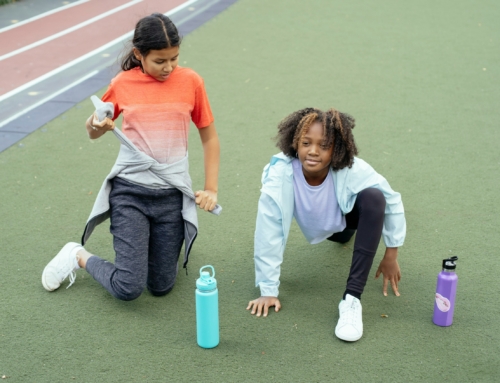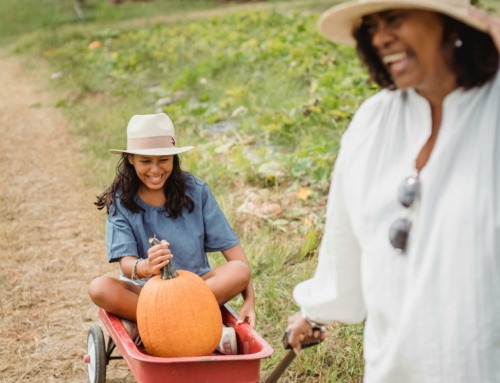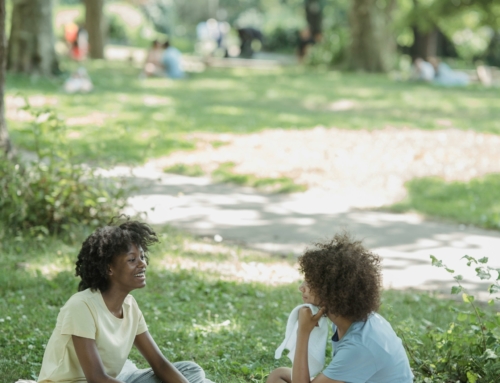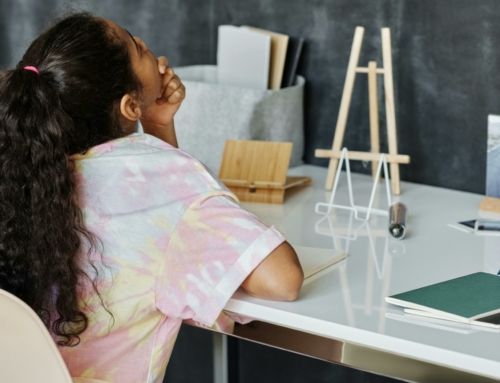Navigating Teenage Peer Influence: Embracing the Good and Steering Clear of the Bad
Introduction
Hey there! Today, we’re diving into a topic that touches every teen’s life—peer influence. Whether it’s the friends you chill with after school or the crew you hang out with on weekends, the people around you play a huge part in shaping who you are and who you’ll become. But let’s keep it real, not all influences from our peers are created equal. Some can lift you up, pushing you toward your dreams, while others might steer you down paths that aren’t really you.
So, what’s the scoop on navigating these waters? How do you embrace the good vibes and sidestep the bad ones? That’s exactly what we’re unpacking today. From understanding the psychology behind peer influence to learning how to turn peer pressure into peer support, we’ll cover all the angles. And trust me, by the end of this, you’ll be better equipped to choose the right crowd, influence others positively, and make decisions that truly reflect who you are and where you want to go.
Peer influence isn’t just about following or resisting; it’s about recognizing the impact our friends and acquaintances have on our daily decisions and long-term goals. It’s about knowing when to say yes and when to confidently say no. And yes, while it can be tough at times, especially during your teen years, it’s also a powerful opportunity to drive positive changes in your life and in the lives of those around you.
So, let’s get real about the highs and lows of teenage peer influence. Whether you’re a teen looking for ways to manage these dynamics, or a parent aiming to guide your teen through these formative years, this post is for you. Let’s talk about how to make peer influence a positive force in your life, share some real-life stories of teens who’ve navigated this journey, and offer some practical tips to keep you moving in the right direction. Ready to turn your peer experiences into stepping stones for growth? Let’s roll!
Understanding Teenage Peer Influence
What is Peer Influence?
Peer influence is a powerful force in the life of every teenager. It’s the impact that your friends and peers have on your behavior, choices, and overall way of thinking. While the idea of “peer pressure” often gets a bad rap, influence among peers can also be a positive and motivating force. It’s not just about being pushed into doing something; it’s also about the support and encouragement friends can offer, helping each other overcome fears and achieve goals.
The Psychology Behind Peer Influence in Teenagers
So, why is peer influence such a big deal during your teen years? It’s all rooted in psychology. As teens, you’re in a stage of life called adolescence, a time when you’re figuring out your identity and where you fit into the world. This makes you more sensitive to the opinions and actions of your peers. According to psychologists, this isn’t just social; it’s biological. Your brains are still developing, particularly in the areas that control decision-making and impulse control, which makes you more susceptible to the influences around you.
Positive vs. Negative Peer Influences
Understanding the difference between positive and negative peer influences is crucial. Positive peer influence occurs when peers encourage each other to be their best selves. This might look like motivating each other to study, participating in community service, or supporting each other’s healthy lifestyle choices. On the flip side, negative peer influence can lead teens to engage in risky behaviors or adopt harmful habits, often due to the fear of rejection or the desire to fit in.
This distinction is vital because it helps you recognize the kind of influences you’re exposed to and choose your friends wisely. By being aware of who you hang out with and the values they uphold, you can surround yourself with positive influences that propel you towards personal growth and success.
The Power of Positive Peer Influence
How Positive Peer Influence Shapes Behavior
Positive peer influence is more than just a buzzword; it’s a transformative tool that can shape the trajectory of a teenager’s life. When teens encourage each other to excel in academics, engage in extracurricular activities, or stand up for what’s right, they create a culture of positivity that resonates through their entire peer group. This kind of influence fosters resilience, promotes self-esteem, and builds skills that are crucial for lifelong success. It’s about boosting each other up, not dragging each other down.
Real-Life Examples of Positive Peer Influence
Let’s bring this concept to life with some stories. Consider a high school basketball team where players encourage each other to maintain good grades to stay on the team, or a group of friends who start a book club to help each other excel in literature class. These aren’t just activities; they’re opportunities for peers to push each other towards greatness. Another example might be teens who band together to volunteer at local charities, inspiring a sense of community and responsibility towards others.
Encouraging Positive Influences in Your Circle
So, how can you encourage more positive influences in your circle? Start by being the change you wish to see. Show enthusiasm for good habits, and you’ll likely inspire your peers to follow suit. Celebrate your friends’ successes openly, and they’ll do the same for you. Also, choose your friends wisely—look for people who share your values and aspirations. They are the ones who will push you towards your goals, not away from them.
The Risks of Negative Peer Influence
Recognizing Signs of Negative Influence
Understanding the signs of negative peer influence is crucial for teens who want to maintain their integrity and personal values. Signs might include feeling pressured to conform to behaviors that don’t align with your beliefs, such as skipping class, experimenting with substances, or engaging in bullying. Other indicators include a noticeable change in mood or behavior after spending time with certain groups, or feeling diminished or disrespected by friends.
Stories from Teens: The Impact of Negative Influences
Hearing from peers who’ve navigated negative influences can be a powerful learning tool. For instance, consider the story of Alex, a teen who fell in with a crowd that prioritized partying over studying. It wasn’t until his grades dropped and he missed out on sports opportunities that he realized the cost of these influences. By sharing these stories, teens can see the real-life consequences of negative peer pressure and the value of making choices that truly benefit them.
Tips for Teens to Resist Negative Pressures
Resisting negative influences requires courage and a strong sense of self. Here are some strategies:
-
Trust Your Gut: If something feels wrong, it probably is. Listen to your instincts and don’t be afraid to walk away.
-
Find Support: Surround yourself with friends who respect your choices and encourage you to stay true to yourself.
-
Set Clear Boundaries: Be upfront about your limits, and don’t hesitate to say no. True friends will respect your decisions.
-
Seek Adult Guidance: When things get tough, talking to a trusted adult can provide perspective and advice on handling difficult situations.
Parents’ Role in Managing Peer Influence
Guiding Without Controlling: A Delicate Balance
For parents, striking the right balance between guiding their teens and giving them the autonomy to make their own decisions is key. It’s about being there as a support system without overstepping. Encourage open discussions about daily experiences and the influences they face, which can help teens feel comfortable sharing their thoughts and concerns. This open dialogue fosters trust and makes it easier for teens to seek advice when they’re unsure about their choices.
Communicating Effectively About Peer Influence
Effective communication is foundational. Start conversations by listening more than you speak, and make sure to validate your teen’s feelings. Discuss the difference between positive and negative influences and brainstorm together on ways to handle pressure. These conversations should be ongoing—regular check-ins can make a big difference in how well you understand the challenges your teen faces.
Supporting Your Teen Through Challenges
Supporting your teen through the challenges of negative peer influence can include providing consistent emotional backing and practical advice. It might also involve helping them build a network of positive influences by encouraging involvement in sports, clubs, or community activities that align with their interests and values. When the going gets tough, be their cheerleader, reminding them of their strengths and the power of their choices.
Turning Peer Influence into a Positive Force
Strategies to Leverage Peer Influence Positively
Turning peer influence into a positive force starts with intention and action. Here are some strategies that teens can employ:
-
Be a Leader: You have the power to set the tone among your peers. By choosing positive actions and attitudes, you can influence others to follow suit.
-
Promote Inclusive Activities: Encourage your friends to get involved in group activities that promote teamwork, respect, and mutual support. This could be sports, volunteer work, or creative projects that bring out the best in everyone.
-
Celebrate Each Other’s Successes: Make it a point to celebrate achievements—big or small. This builds a supportive environment where everyone feels valued and motivated to do their best.
Success Stories: When Peer Influence Leads to Empowerment
Highlighting success stories can be incredibly motivating. For instance, a group of teens who organized a community clean-up that grew into a city-wide environmental movement. Or a student who inspired his classmates to join him in tutoring sessions, which led to improved grades for the entire group. These stories showcase how positive peer influence can create ripple effects of empowerment and achievement.
Jesse’s Insights: Transforming Peer Pressure into Peer Support
From Jesse’s perspective, turning peer pressure into peer support is about finding strength in numbers. It’s about shifting the narrative from ‘fitting in’ to ‘standing out together.’ Jesse believes that when teens support one another in pursuing personal growth and collective goals, they not only enhance their own lives but also contribute to a healthier, more positive community.
Conclusion
Keeping the Conversation Going
How to Engage in Ongoing Discussions With Peers
Keeping the conversation going with your peers about the influences you face is crucial for cultivating a supportive environment. Here are some tips:
-
Regular Check-Ins: Make it a habit to check in with your friends about how they’re doing, not just in terms of their day-to-day but also how they’re feeling about the influences around them. This can help create a safe space for sharing and support.
-
Group Discussions: Organize regular meet-ups, either in person or online, where you and your peers can discuss important topics, including the challenges and pressures you face. This keeps everyone engaged and fosters a sense of community and belonging.
-
Use Social Media Positively: Leverage social media platforms to share inspirational stories, positive affirmations, and supportive messages. It’s a powerful tool for keeping the conversation alive and spreading positivity.
Tools and Resources for Healthy Peer Interaction
Equip yourself and your peers with tools and resources that encourage positive interactions. This might include:
-
Apps and Websites: There are many apps designed to promote mental well-being and healthy social interactions among teens. Encourage your friends to explore these tools.
-
Books and Articles: Share books and articles that offer insights into managing peer influence and personal development. Reading and discussing these materials can provide new perspectives and strengthen your group’s resilience.
-
Workshops and Seminars: Participate in workshops or seminars focused on skills like communication, conflict resolution, and self-awareness. These can be great for learning and growing together.








